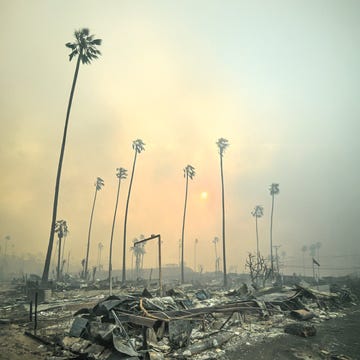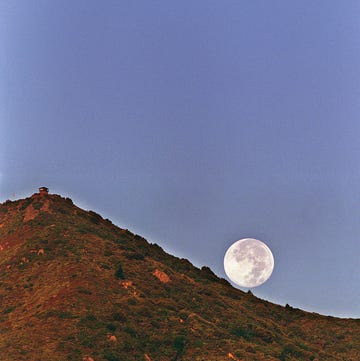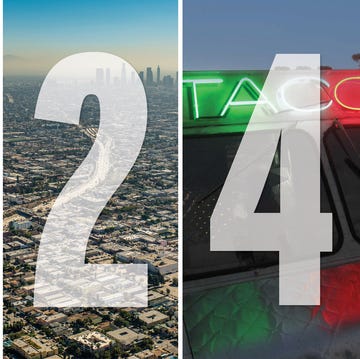My middle brother James had gifts none of us understood. First grade was nearly over before our parents discovered that the nuns had tucked him away in the coatroom most of the year, since there was “nothing left to teach him” in class. The rest of grade school went similarly, with James taking on his own education, pursuing what called to him and mostly ignoring what didn’t.
One of his great interests, it turned out, was the Charles M. Russell Museum in town, a surprisingly modernist little gem on 13th Street North, built the year before I was born, next to Russell’s original log cabin studio and modest home. James went to the museum alone from grade school on, often walking there after school, the rare kid who entered under his own power rather than being dragged there on field trips or by parents. I might have liked to do the same, but I was six years younger and never had the freedom, or the reason, that James possessed. He was a born artist, and I was a girl with no evident talent.
This story appears in Issue 31 of Alta Journal.
SUBSCRIBE
Russell, a self-proclaimed “cowboy artist” from the turn of the century, was an obvious role model for my brother, as a painter who’d worked and thrived right there in Great Falls, Montana. But while James admired and enjoyed seeing oil paintings up close, a cowboy painter offered only so much. James reserved outright admiration for the Old Masters. His team was the Italian Renaissance, a passion baffling even to other Catholic kids, and he collected Renaissance painters the way some boys collected baseball cards, favoring, it seemed to me, a lineup of quattrocento all-stars: Botticelli, Masaccio, Filippo Lippi, Ghirlandaio.
So when James was 12 and made the final round of the state spelling bee, we all thought what happened was a kind of miracle. It came down to just James and one other kid, who missed a word. Then the pronouncer turned toward my redheaded brother, bent low over the microphone, and said: “Renaissance.” It came out distorted by amplification, fuzzy with s’s, but for James it must have been beautiful. No need to have it repeated or used in a sentence. He might have been the only 12-year-old boy in America—forget Montana—better acquainted with Brunelleschi than baseball, with Fra Angelico than a forward pass. James leaned toward the microphone with casual ease and became the Treasure State Spelling Bee Champion of 1974.
Our family was large by then: six boys and three girls, spanning nearly 16 years. I was the second youngest, number eight of nine. James was number six, and when he entered Charles M. Russell High—a school named after a painter, rather than a president or pioneer—it seemed fated for him, in an artistic sense. Our older siblings had all fit in fine. They were social and sociable, cheerleaders and jocks with lots of friends. My second-oldest sister even dated CMR’s star quarterback, Rowan Bosch.
But school was never easy for James. While typical students emulated Montana school mascots like wildcats and grizzlies—mauling at will—James resembled a British grad student. He’d missed the easy social gene our older siblings got. “Act normal,” my oldest brothers told James, by which I guessed they meant he should watch basketball in winter and baseball through spring and summer, grow his hair long and never wear a hat, no matter how many degrees it got below zero. Normal. Chew tobacco, do a few drugs, drink Oly from a can. Like football and fishing and rock ’n’ roll more than anything else in the world. Normal normal.
Instead, James dressed in a sports jacket over casual slacks. At home, he was mostly in his bedroom drawing and painting, reading and dreaming of Italy and New York. For this he was bullied by classmates, harassment that at least once left visible evidence. Our brothers exacted enough revenge that the bullying stopped. Or at least the kind that left marks.
I looked on all of it with fear and admiration. Mostly, having five big brothers made me brave. But it could also be confusing.
If my brothers were out of the house, I invaded their rooms. In the other bedrooms, I’d root around for love notes and girlie mags, but in James’s case, I knew just what I was looking for: Mad magazine and art books.
Underneath his messy bed, I rifled through hardcovers until I found the one I wanted, a book about a painter named Delacroix that I couldn’t get enough of. The book fell open to a page I looked at often, where the caption read: “The Death of Sardanapalus, 1827.” The painting showed a man like my brothers and their friends—facial hair, muscles, dark and brooding—who lay across a big bed propped up on one arm, where he watched as a pale nude was flung nearly lifeless across the bed, while others clung to its side, bare buttocks here, breasts and throats there. Muscled men in loincloths pinned women’s arms roughly behind their backs, driving knives into their bare flesh. A white horse in one corner was likewise stabbed beneath its pale throat. Gold and jewels, women, horses, all in various stages of destruction, filled the rectangle. It was far more disturbing than any porn, but I wouldn’t look away until I heard someone in the hall or on the stairs.
When James was about 14 years old and I was 8 or 9, I put on good clothes and combed my hair (rare), so that I looked as presentable as the girls I’d seen in a book he had on John Singer Sargent, then climbed up to the attic, where my oldest sister’s room was, as peaked and drafty as a Parisian garret. James had me stand next to the room’s one window, looking south over the alfalfa fields toward the twin silos of the nearby dairy, and positioned my face to catch the light. He held a paintbrush and palette, his canvas angled between us. In a different lifetime, the silos outside might have been Gothic spires, or the campanile of a southern Italian piazza. In short, I sensed the romance of being an artist’s model, and in the soft afternoon light, I felt just like the girls in paintings in his books.
But as it turned out, modeling was dull. I watched a daddy longlegs skitter along a seam where the slanted roof met a low wood-paneled wall. Dust motes filtered in the light between us, as if the spider were on an old TV with bad reception.
“Don’t move,” James said. The palette he cupped in his left hand was covered with blobs of paint, and he stabbed his brush into one and smeared it around in another. The violence of it fascinated me, that something pretty could come of such barbarity.
“I’m not,” I said, watching the colors become a new third.
James stopped smearing. “Don’t look,” he said.
It was unfair that he could examine every inch of me while I couldn’t look back. “Why not?”
“Don’t talk,” James said, gesturing in annoyance with both hands. Flicks of paint fell onto the rug.
I started to roll my eyes, but then cut it out. I had hopes for the picture turning out well. James slapped the brush onto the stool he used as a side table. In two long steps, he was beside me. I watched him come, wary.
“Don’t look at me,” James said, repositioning my chin. He pushed my right shoulder back, so that I stood askew from the canvas, looking into the far corner of the room like a bad girl sent to contemplate her behavior.
Walking backward slowly, he said, “Don’t. Move.”
I pretended to be a tree, noble and uninterested in peripheral
goings-on. But it was uncomfortable standing so still and being stared at. My nose itched and my legs and back ached, difficulties I tried to divorce from my face. For reasons I couldn’t explain, I longed to see myself transformed by paint. It would be something very different from a photograph. A portrait, I already knew, revealed all sorts of things. I couldn’t wait to see it.
I’d carefully chosen my outfit, a sleeveless velour pantsuit my aunt Bette had made for me, with flaring bits of fabric at the shoulders, like the epaulettes on a captain’s jacket. The velour was a dark burgundy, and underneath I wore a yellow turtleneck, providing, I thought, bold and interesting contrast. I wore socks but didn’t bother with shoes, since you couldn’t see my feet beneath the pant legs’ wide flare.
The spider was gone, and I watched dust sift and swim through the afternoon light. I tried thinking about paintings I liked, but the first thing that came to mind was the Renoir bather in my father’s den, a framed reproduction that bothered me. It wasn’t so much that the woman was nude as that she was so pink and vulnerable that it made me want to look away.
“I have to go to the bathroom,” I said without moving my lips.
“Hold it,” James said. He was so quiet, I sometimes heard the soft slap of paint when his brush met canvas.
The door creaked open, and the head of our youngest brother, Denny, appeared around it. “Help,” I said, careful not to move.
“Mom says not to paint up here,” Denny said.
James said nothing and kept painting.
“She sent me,” Denny said, hurt that anyone would continue doing something our mother didn’t like.
“Almost done,” James said, but it felt like hours before he added, “OK, that’s it for now.”
I turned his way. His eyes were drilled down on the rectangle of canvas in front of him. I turned the other way and looked out the window. The fields were turning from gold to purple, a quiet shadow falling over things. I walked toward the door like I was getting out of there, but just a step past James, I spun around and looked over his shoulder.
It could have been no one else but me. And yet. My face was waxlike against the rich burgundy of the pantsuit, and my short hair made my head look small atop the flaring shoulders. There were heavy lines like violent commas on either side of thick lips that barely contained too-large teeth. The blue of my eyes, the only color in a wheat field of face and hair, was two tiny dots between clamshells of heavy lids on top and bottom.
I claimed to not much care how I looked, but I took pride in my physical abilities as a competitive swimmer and basketball player, and it hurt to see no trace of that mirrored in my appearance.
“That’s me?” I said.
“Ever hear your voice recorded?” James said, not looking up.
My second-oldest brother had once taped me talking for a class project. When he played it back, it sounded like I was about three, and none too bright.
“You probably thought it didn’t sound like you.” He turned from the canvas, brush wet with paint. “But it’s how you sound to other people.” He turned back to painted me. “And this is what you look like.”
It was too honest, like James himself. And I didn’t want to know what I looked like. I wanted to know what I was like. I’d hoped James, the artist, could reveal a different me, someone heroic or dramatic or simply interesting, that I could live into.
“It sucks,” I said, and stomped out as forcefully as stocking feet allowed, hoping anger would feel better than disappointment or shame.
Just over a year later, I’d broken my arm a second time in as many years, and James wanted me for a painting again. Me and Denny. As the two youngest, we were still ripe for management from above. I was banned from any sports and had little to do as winter turned into spring, but I didn’t want what James was selling.
“It’s not like that,” James said. He held up a camera he’d gotten for Christmas. He said he’d work from photos, just like Edgar Degas had done.
He made it sound more appealing than standing around, so Denny and I tramped behind him to the backyard, wearing ski jackets and knit caps. A Chinook had swept through days before, melting the snow, but temperatures had dropped again since then. It was dreary, cold and overcast, the ground and trees as brown and denuded as a quattrocento Lamentation in one of James’s books.
He looked at us. I had my jacket zipped as high as it would go over my arm inside, which wasn’t high enough for the weather, and a glove on my good hand. Denny’s bare hands were tucked inside the sleeves of his jacket.
“Hats off,” James said.
“It’s freezing,” I said.
James stared at us a moment, two kids in pointy hats that might have been dunce caps in another era.
“Where should I put it?” Denny said, not moving his hands.
“Never mind,” James said, “I’ll paint them out.” He gestured for us to follow, and we marched behind him up the slight slope in the lawn, south toward the dairy. When we were nearly to the fence, he faced us. “Turn around,” he said, “and run away from me.”
“Like we’re scared?” I said.
“Like you’re happy,” James said. “Like you like running.”
I whipped around and started running fast as I could, Denny chasing after me. We laughed and shouted down the big yard. The wind was cold on my face, but I felt better than I had in weeks. We ran all the way to the other fence, where we pretended to crash into it. I bounced backward, good arm flung back from the force of imaginary impact. Denny giggled, his face flushed, and it would have been a nice photo if James had snapped the front of us then.
“Race you back,” Denny said, and I chased after him, a little wobbly on the uphill, the cast arm throwing me off-balance.
“I’m not sure those will come out,” James said, frowning, when we got to him. “You went too fast.” He walked back the way we’d come, and we spun around to trail after him.
“That’s what running is,” I said to his back. “Fast.”
About mid-yard, he stopped. “Start here,” he said, “and just pretend you’re running, so the photos aren’t blurry.” This sounded annoying, but it was fun. Denny and I took turns running like the Six Million Dollar Man, slow but bionic. So slow anyone could tell it was slow-motion from really fast.
After the photos came back, James let me see them before disappearing into his room. When I saw myself, humpy and cockeyed in my orange jacket and pointy hat, one empty sleeve dangling free as I careened down the frozen yard, I thought the painting would be a good one.
By this time, James felt ready to take up his first monumental, multi-figure work, the apex of painterly ambition. It would be called Catcher in the Rye, based on one of his favorite books. James explained that the catcher was an older kid who saved younger ones from running off a hidden cliff, like the ancient buffalo jump near our hunting shack at Fort Shaw, where Blackfoot hunters once ran herds of buffalo in the direction of the cliff and the buffalo ran straight off it. The jump was called pishkun in Blackfoot, which means “kettle of blood.” Later, that seemed like an omen we might have noted, but at the time I just found it exciting.
My brother’s literature-inspired painting was no doubt informed by Renaissance art, which so often illustrated the Bible or classical mythology, or even by the way Delacroix used Lord Byron’s poem for The Death of Sardanapalus. But I’m sure Charlie Russell was whispering to him too. Like Russell, James used our own landscape as backdrop and people he knew as characters. For the cliff, he used the rocky outcropping above the field to our north, and since our house was surrounded by alfalfa, not rye, he depicted Denny and me hurtling through knee-high swaths of green and purple in our ski jackets and sneakers. The young man straining to save us was our sister’s boyfriend, Rowan Bosch—as curly-haired and muscled as a Greek statue—taut and ready like the quarterback he was.
As weeks went by, I often visited James’s painting in progress. After the bus dropped me off from school, I’d go by his room before he got home. I watched as the big canvas was stretched, then primed through several coats. My cast came off, and cartoons of three figures were sketched in. Slowly, Denny and I came into view, like fuzzy Polaroids firming into recognizable shape.
One afternoon, I peeked through James’s door and his painting looked nearly finished. I started to walk around the unmade bed, covered in books, but the big canvas along the back wall stopped me. The bottom third was filled with green, each leaf and tiny bud as distinctly observed as in a Botticelli, the figures of me and Denny nearly buried in it, bursts of blond hair and brightly colored jackets. Connecting the ground and sky was Rowan, his arms open, ready to grab our hurtling forms. Rowan’s broad shoulders and solid forearms were real as life against the brilliant sky, but where his face belonged there were no features, just an oval of white primer.
I knew why the only face in the picture was the last thing left. Faces were hard, everyone knew that, but Rowan, so unearthly handsome, was especially tricky to capture. James kept trying, though. While I returned to swimming through the summer, and to basketball practice in early fall, James was underground with his painting. He’d go in boldly, putting in Rowan’s eyes, lips, mouth, but then something wouldn’t sit right. The expression, or the turn of head, the light or lack of it in his eyes. Rowan’s face would be there one day, then gone days later, the pale oval back in place.
James caught me in his room one early fall afternoon, when I’d stayed too long looking. The door flung open and I turned around, startled. I hadn’t heard him on the stairs. But James didn’t seem surprised to find me.
“Don’t come into my room when I’m not here,” he said flatly, dropping an armful of books on the bed, but he didn’t seem irritated and began pawing through the books, looking for something. I wondered if I was supposed to leave now.
“What do you think?” He nodded in the direction of the canvas.
“I like it,” I said, and James looked up, pleased. “When will it be finished?”
James ran a hand through his hair and went back to looking through the books. “When I get Rowan to sit still.” I’d seen James at the kitchen table with paper and pencil, sighing as Rowan, across from him, mugged and joked with anyone who came through the room, which was everyone.
“Take a picture,” I said.
“Photos don’t work well with faces,” James said. He’d found the book he wanted and sat hunched on the bed, turning pages. “You need life in a face.”
I glanced back to the painting, where even though no part of my own face was depicted, I knew myself. “I look weird,” I said.
“You are weird,” James said. But he propped open the book against his pillow and pointed.
I walked over. The book was open to a two-page spread filled with a riot of figures and strange images. “Hieronymus Bosch,” James said. “Temptation of Saint Anthony.”
“He has the same last name as Rowan!” I said, thinking that was why James was showing it to me. But he just nodded and turned the page. There, in a detail from the previous one, was an evil-looking bird with a letter impaled on its sharp lower bill, humping along on ice skates in an orange cloak.
I laughed, getting it. In James’s painting, I resembled that strange bird. Like I might be anything if I turned around, even a monster. I peered closer. “What does the letter say?”
“It’s a mystery,” James said, sounding happy. He turned the page, lost in whatever he’d found there, forgetting about me already.
I stepped back and looked at the painting a long time. There was Denny in light blue, mirroring the sky, his body in wild headlong tilt toward Rowan’s strong and waiting arms. And there was me, winged and slightly hunched, struggling forward. I recognized myself more than in any photograph.
Rowan’s face was still unfinished when he was killed in a car accident with three other boys months later. More than anything—even more than their gutting memorial service or Rowan’s funeral, more than my heartbroken sister, more than my mother’s quiet explanation that death meant gone forever in this lifetime—it was my brother’s painting that helped me understand. Rowan’s face would never appear there; he was never coming back. There had been no one waiting to save him, or the other boys.
Art somehow knew the truth of things. I wanted so much to understand it.
A decade later, as a graduate student studying art history in New York, and later working at the Metropolitan Museum of Art, I was often informed by people there that it was so odd I had somehow discovered art in a place like Montana. How unlikely.
Not really, I’d say, and leave it at that.•
Bridget Quinn is a writer, art historian, and critic living in western Sonoma County. She’s the author of the biography Portrait of a Woman: Art, Rivalry, and Revolution in the Life of Adélaïde Labille-Guiard and the books She Votes and Broad Strokes.















